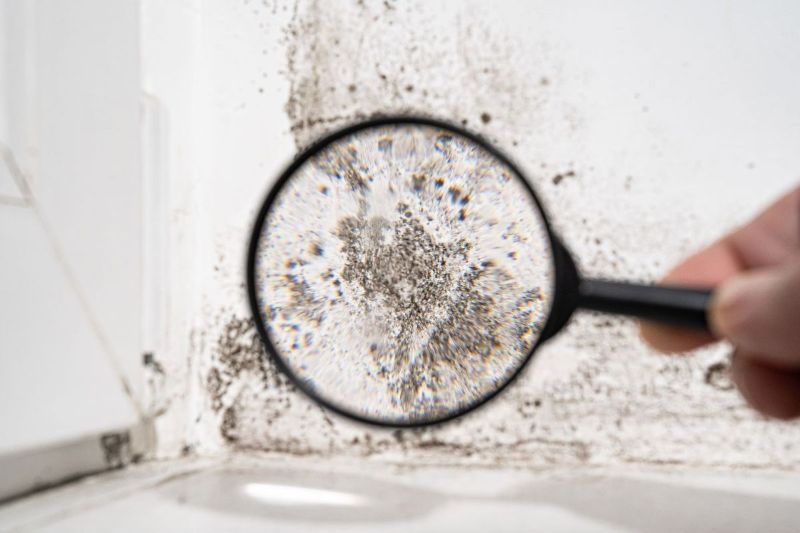In the unpleasant circumstance that microbial growth occurs, RMC is familiar with the essential processes that must be completed for effective mold treatment. The drying out of a facility is a vital step in avoiding mold and mildew, which can be damaging. It is critical to have a specialist remove contaminated areas properly because certain kinds of mold and mildew can create significant health concerns. This is why it is essential to have a professional perform the appropriate removal of polluted sites.
To properly eliminate hazardous microbiological contamination, our crew of qualified professionals uses best practices and the newest technology in remediation. This includes but is not limited to the following:
Teams have been trained and directed by supervisors who have expertise and certification.
Utilizing cutting-edge technology, such as thermal cameras and humidity detection devices, we could locate the exact position of the moisture that was encouraging the growth of microbes.
We have many crews, hygienists, and supervisors who are all trained to work swiftly and efficiently, ensuring that the task is done correctly from the beginning.
On more significant projects and when necessary, RMC will use techniques like dry ice blasting, air washing, and media blasting on projects to speed up the production process.
RMC personnel is additionally DOSH trained, which enables us to smoothly manage any arsenic or lead hazards that may occur throughout a mold remediation operation.
Mold spores are everywhere; they are airborne, constantly present, and can consume a wide variety of organic substances. Mold does not eat inorganic materials (such as glass, concrete, or metal), but it can grow on the top of inorganic things and consume dirt, dust, or other organic materials. Because mold spores and organic compounds are abundant, the only thing that must be present for mold to thrive is moisture. This does not mean that water must be present; rather, the relative humidity must be at or above 65 percent. Mold growth can be prevented by controlling water and dew points above 65 percent.
When water damage occurs inside a structure, the water that is standing or liquid tends to evaporate naturally into the indoor spaces, resulting in a considerable increase in the relative humidity of the building. Depending on the weather conditions found outside, opening the windows to allow air to flow from indoors to outdoors is an efficient method for lowering the relative humidity found indoors. It is possible to quickly inundate the indoor spaces if tiring the outer environment or supplying some measure of internal desiccant is not established. Removing stagnant water and providing airflow to moisture surfaces increase the effectiveness of water evaporation.
The majority of water damage occurrences only affect a portion of the structure; therefore, limiting the affected area to only that portion of the building can significantly improve the efficiency of the evaporation process. Mold development can start anywhere from 24 to 48 hours after the drying process is finished if it leaves pools of water or moisture behind or underneath cabinets, in wall cavities, or under flooring that is nonporous or only partially porous. The musty stench characteristic of mold and mildew is often the first sign that there is a problem, and it may be used to detect mold growth in even the most concealed regions. Removing subsurfaces is an essential step in the remediation process for mold or water damage when performed separately as a stand-alone operation.
Mold remediation includes the following steps:
- Determine the specific nature of the work that needs to be done by carrying out an exhaustive visual inspection with cutting-edge technology such as thermal cameras and wetness detection equipment.
- Establish engineering measures, such as the confinement of the Jobsite with six mils poly and unfavorable air equipment that is HEPA-filtered, to prevent the contamination of regions that are not touched by the incident.
- To reduce the likelihood of mold and other contaminants spreading, perform debris-controlled demolition using specialized equipment.
- Place all of the debris in poly bags with a thickness of 16 mils, and make sure they are washed and remediated before leaving the confinement area.
- A comprehensive cleaning of all surfaces using HEPA-vacuuming, wet-wiping, sanding, or media blasting, followed by the second round of HEPA vacuuming and wet-wiping.
- Final check to ensure that no apparent dust or debris is remaining at the site
- Clean the air by cleaning it with HEPA-filtered equipment to eliminate any airborne contaminants.
- Post-remediation testing, if necessary, to ensure that all areas meet the standards for the quality of the air that is free of microorganisms
- The evacuation of containment and the completion of cleaning in all affected areas in advance of structural repairs

